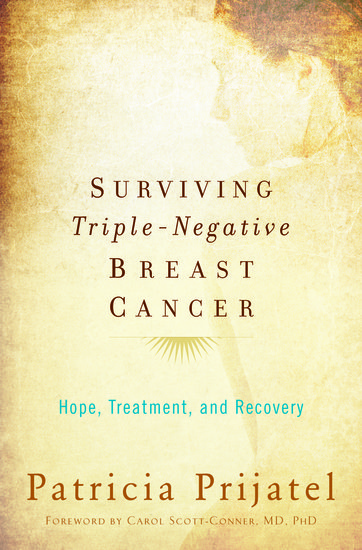By Patricia Prijatel
The big news this week comes from the Cancer Genome Atlas program, which has announced a strong molecular connection between basal-like breast cancer tumors and ovarian cancer. The news stories I have read on the topic provide a great deal of hope for women with basal-like cancers. But the hope is, unfortunately, buried in a greater deal of confusion.
Here’s the hope: We’re getting closer and closer to understanding what makes breast cancer tick on a molecular level, and that means we could ultimately have treatments that target specific molecular anomalies, making the treatment more effective, efficient, and possibly less toxic. Most important, it would be clearer to doctors which patients need chemo and which don’t, saving thousands of people from unnecessary and dangerous treatment. And making chemo for those who need it more precise.
Among those who could benefit most from this research are the women and men with triple-negative breast cancer (TNBC), which is currently treated with anthracylines — chemotherapy drugs such as Epirubicin and Adriamycin — that can cause long-term side effects including heart disease and increased risk of leukemia. Moreover, metastatic TNBC — cancer that has spread beyond to distant organs — can be resistant even to current forms of chemo.
The research on the genome project, published in the 23 September 2012 online edition of the journal Nature, ties basal-like breast cancers to ovarian cancers on a molecular level, suggesting that ultimately TNBC could be treated with the less-toxic chemotherapy used for ovarian cancer, including a mix of a carboplatin (Paraplatin) or cisplatin with a taxane such as paclitaxel (Taxol) or docetaxel (Taxotere).
That’s the hope. Now the confusion. The biggest confusion revolves around our understanding of triple-negative breast cancer (TNBC).
Some news stories I have read equate TNBC with basal-like tumors, as though the two were synonymous, which is not accurate. There is a correlation between TNBC and basal-like cancers, but not all TNBC tumors are basal-like, and not all basal-like tumors are TNBC. In fact, some researchers break TNBC into three subtypes, including basal-like and non-basal-like.
The other, and bigger, problem, come in the terms journalists and researchers use for TNBC: “particularly deadly,” “especially aggressive,” and “lethal.”
I understand why these words are used; it makes the research appear more significant. But these terms can frighten and depress those with TNBC and their families, and the research is significant enough to stand on its own without hyperbole.
Lost in the hyperbole is the fact that most women survive TNBC. The rates depend on too many factors to offer a generalization, but multiple studies have shown from 70 to 90% of patients with TNBC with no recurrence after five years. And rates for TNBC recurrence drop significantly after three years, so TNBC patients who have reached five years without recurrence often face better long-term odds than those with other forms of breast cancer.
It is a disease to take seriously, but who doesn’t take cancer seriously? Patients and survivors don’t need frightening words for effect. They are frightened enough.
Triple-negative breast cancer gets its name because tumors of this subtype lack receptors for estrogen, progesterone, and the human growth hormone Her2/neu. The significance of being negative for these receptors is that TNBC lacks a targeted therapy, such as tamoxifen, which blocks the effects of estrogen, Arimidex, which prevents the production of estrogen, and Herceptin, which treats her/2-positive tumors.
So, TNBC is a disease defined by what it lacks. But, thanks to research on the human genome, it may soon be defined by its specific molecular characteristics. And treating something you can define is a whole lot easier than treating what you can’t.
Patricia Prijatel is author of Surviving Triple-Negative Breast Cancer, published by Oxford University Press. She is the E.T. Meredith Distinguished Professor Emerita of Journalism at Drake University. She is doing a webcast with the Triple Negative Breast Cancer Foundation on 16 October 2012.
Subscribe to the OUPblog via email or RSS.
Subscribe to only health and medicine articles on the OUPblog via email or RSS.
View more about this book on the ![]()
![]()


[…] Triple-Negative Breast Cancer permalink buy this book read more Posted on Friday, October 5th, 2012 at 6:30 am […]
[…] the Triple Negative Breast Cancer Foundation on 16 October 2012. Read her previous blog posts: “Just what is triple-negative breast cancer?” and “Fighting Triple-Negative Breast […]